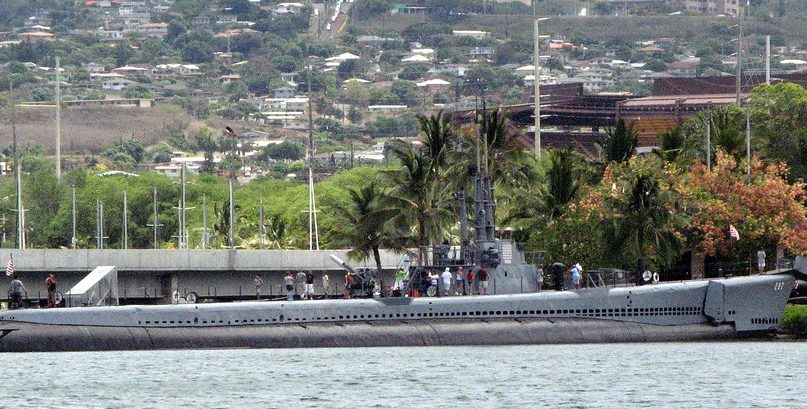
The Netherlands are currently studying their options, for the planned replacement of their 4-strong fleet of Walrus subs. It is likely that, for a country the size of the Netherlands, going big would not be the best option. Buying large subs would be not only unsuited to their missions but would also be a needless expenditure. The 4 Walrus submarines which have composed the Dutch fleet since the 1990s is nearing retirement age, and the next generation is being considered. The 4 subs were built in the Netherlands, back when they had a sub-building capacity. Those days are gone, so Amsterdam will have to look at the foreign market for their supply. American submarines are off the market, Russian and Chinese subs are out of the question, which leaves Sweden, France, Germany, and Spain. “France’s Naval Group, Navantia in Spain, Saab Kockums of Sweden, and German shipbuilding group ThyssenKrupp Marine Systems are all proposing in-country construction of new non-nuclear boats, and promising significant opportunities for Dutch industry consistent with the government’s recently unveiled Defence Industry Strategy (DIS)”, wrote Jane’s in February 2019. But Spanish Navantia has reduced its production capacity, with several embarrassing mishaps in recent years. Before choosing the supplier, the question is: what are these submarines intended for?
The Netherlands is a small coastal European country, and a NATO member. This means that it can rely on the alliance’s protection, in large part, for its defense. It is true that NATO will call upon the Netherlands to participate in underwater surveillance missions, but the operational demands on Dutch headquarters are not the highest in the world. This means that Dutch subs, in fact, have one main mission: securing and monitoring the maritime borders. In addition, that mission is also carried out by the numerous surrounding countries who watch the Channel waters: the UK, Germany, Denmark, France, and all other regional powers keep a close watch on the waters of Northern Europe. It is unlikely that, for an enemy sub to succeed in penetrating Dutch waters, it would be able to get there undetected by all the neighboring defenses. So, would the purchase of large-capacity subs be the most suitable option?
France is currently releasing the latest production of Naval Group: the Suffren attack submarine. Of course, it is a fine engineering sub, but it must be remembered that the French place their naval ambitions very high, hence their traditionally large submarines. As one of the most Western nations in Europe, they control a large part of the Atlantic, and their military tempo forces them to have submarines which can cover every type of mission. The Defence Post writes:
With the Suffren, a hunter is born today, not a vessel which is going to hide in the depths of the ocean,” Admiral Christophe Prazuck, the French navy’s chief of staff, told reporters. “This is a vessel which has been fashioned to fight … to face down enemies,” he said. The SSN’s mission is to protect strategic vessels such as aircraft carriers and nuclear-powered submarines which are equipped with ballistic missiles (SSBNs) but also to track enemy vessels and to gather intelligence.
The Netherlands are in a vastly different setting and buying subs from the Suffren class would considerably stretch the Netherland’s military budget. The Suffren, for instance, enables the deployment of special forces with special hatches, a type of mission the Netherlands is unlikely to carry out. The Suffren has the latest active and passive sonar technology, because it needs to scan large open spaces in the Atlantic, whereas but Dutch borders are merely 100 miles from the closely watched British shoreline.
Smaller vessels, such as subs from the TKMS pens are a far better choice for the Netherlands: smaller, cheaper and better suited to shoreline monitoring. This option would even divide into two profitable options for Amsterdam: the Dutch Navy could replace piece-for-piece the 4 Walrus, with a limited bill, or they could make the choice of stretching the expense, but for an increased number of submarines. Germany’s submarines are a better fit for the needs of the Dutch navy, and its reputation as “the nation of U-boots” is already established worldwide. Defense world reports on German shipbuilders’ enthusiasm to provide their neighboring country with the new subs and re-enter the race: “We are flexible and want to meet all the requirements.” According to the German shipyard, the functionality of their boats has been proven and that has to be proven with Saab-Damen”, Germany’s former Swedish partner left crippled a few years ago. The Netherlands would find a trustworthy supplier in their historic partner, which has often been taken part in Dutch defense in the past.
It can be tempting for military leaders to “go big”, but it is better to “go smart” and choose what is best suited for one’s needs. The Netherlands are protected by two large powerful nations, one East and one West. They are needed to protect their share of the shoreline, but any excessive investment into “jumbo” subs will be at the expense of the Dutch and will only benefit NATO.
Further Reading on E-International Relations
- Opinion – NATO’s Real Message to the Kremlin
- Opinion – The Plain Sight Threat to NATO, Turkey, and Turanism
- Opinion – Finland and NATO Membership
- Opinion – The Vilnius Summit and the Future of NATO
- Opinion – The Rise of Mercenarism: Avoiding International Accountability
- Opinion – As a NATO Member Finland Will Be a Security Provider